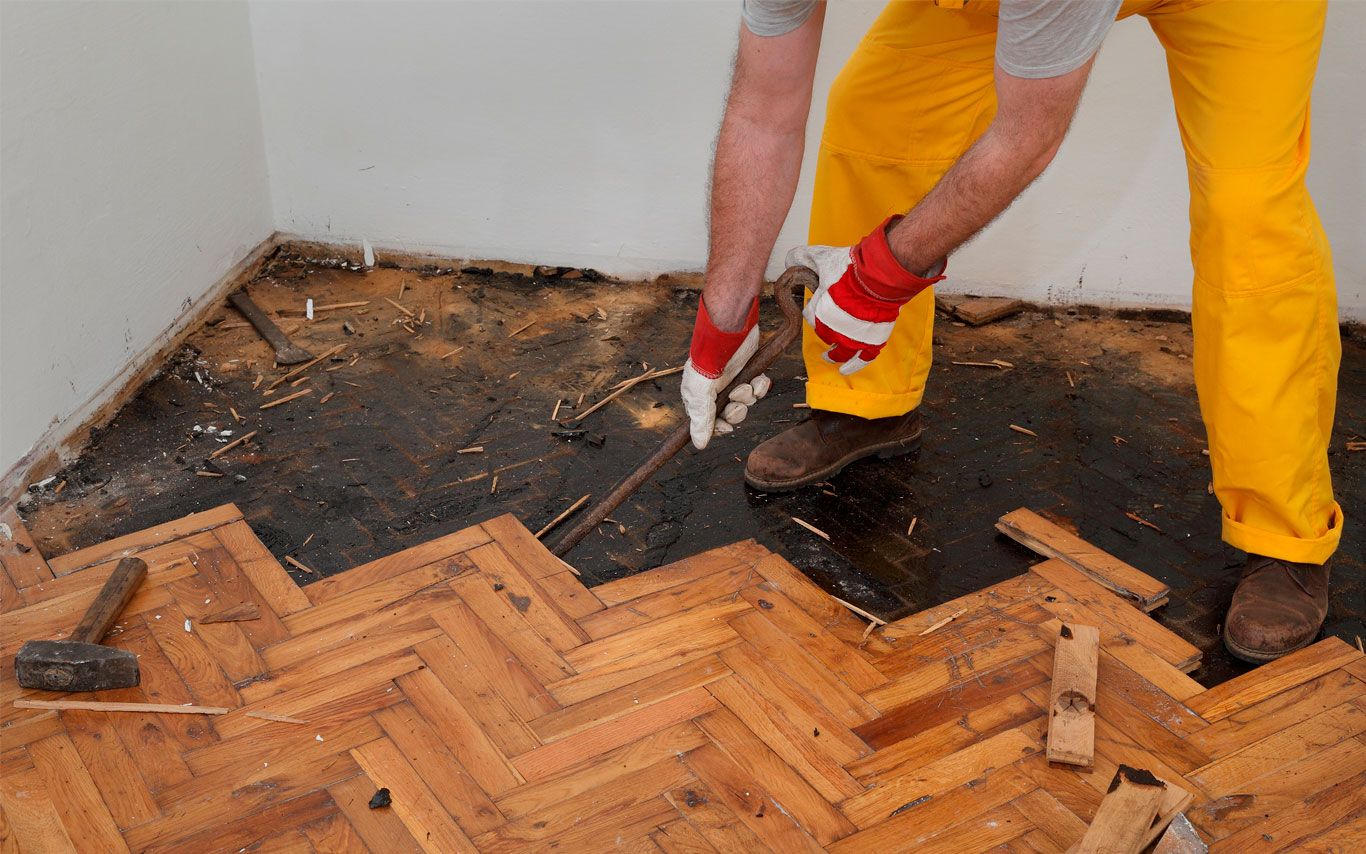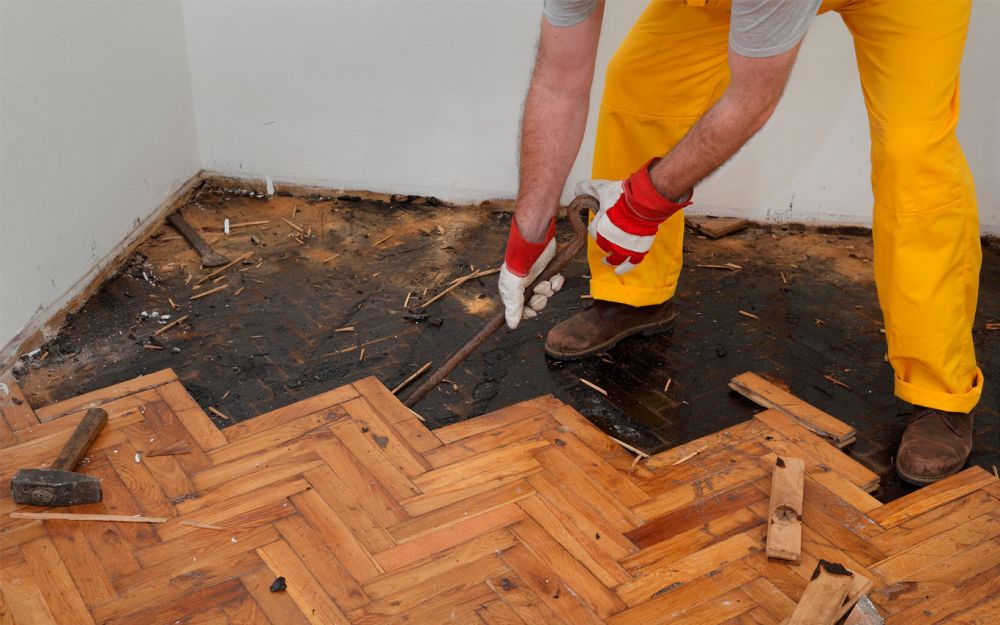What to Do About Water-Damaged Subfloor



New homeowners and experienced do-it-yourself (DIY) repair gurus have one thing in common: they know that problems with your house can get expensive, particularly if you should have fixed them quickly but left them to fester. The subfloor of your home is a vital architectural component essential to your house’s structural integrity and one that you will, if you are fortunate, never see.
Subfloor materials are strong, but when water leaks beneath your finished flooring, the results can be expensive and disastrous. Subfloor water damage must be addressed immediately. Wet subflooring is not a problem that can wait. If you need to repair or replace a water-damaged subfloor, the team at BAY Crawl Space & Foundation Repair is ready to step in and save you from further damage or expense.
How Do You Know Your Subfloor Is Wet?
There are many signs that you may need to repair or replace subfloor sections due to water damage. The most obvious is a spongy feel or “give” to the affected area. Other signs of water damage include warping in the floorboards of your hardwood floors, loose sections in your tile floor, bubbling or peeling in linoleum, lifting in your laminate flooring, or a musty smell that could indicate mold growth.
You may need to get a look at the subfloor to determine if it is wet. You can check from below, which may require heading to the basement or crawl space with a flashlight or cutting away a section of drywall in your ceiling.
Will a Wet Subfloor Dry Out?
Whether your subfloor will dry depends on the level of damage it has sustained to the damaged sections. The best way to ensure that the subfloor will dry out, however, is to mitigate the initial issue. Remediation requires stopping the water leak below your floor covering.
After this, you will need to remove the top floor — the floorboards of wood flooring, carpeting, tile, linoleum, or other flooring materials — so that the subfloor can be exposed to open air, which will dry it out. Dehumidifiers may help in this process by drawing out moisture.
Should a Subfloor Be Replaced After Water Damage?
Subfloor issues should never be taken lightly. Your subfloor is an important weight-bearing component in your home. If you think there are any damaged materials in your subfloor, it is best to call the professionals. At BAY Crawl Space, we have decades of experience dealing with damaged materials and subfloor repair. We can evaluate the structure and perform any repairs needed. Call us at 757-301-5088 or contact us online for an estimate today.
What Causes a Wet Subfloor?
A subfloor gets wet when something causes water and moisture to seep underneath your floor covering. Your subfloor can get wet for a number of reasons. These include the following.
Flooding From a Storm
One of the most common reasons that a subfloor takes damage on the ground floor is your home flooding after a storm. Severe storm damage costs homeowners millions of dollars of damage every year all across the nation, and flooding can very quickly ruin the flooring.
Burst Pipes
Burst pipes are another common issue. Plumbing problems can sneak up on you without warning and get worse without you knowing until they become an emergency situation. The repair costs for burst pipes can be high and compound the cost of a new subfloor.
Plumbing Leaks
Plumbing problems can include slow leaks that might be less costly for a plumber to address. They still, however, can result in a damaged area of the subfloor that must be replaced. Slow leaks in the plumbing are dangerous because the damage can happen without you knowing it is happening. If you see your ceiling begin to drip, it could be an indication of a plumbing leak from upstairs.
Appliance Leaks
Appliance leaks are a common cause of subfloor damage that many people do not think about until it happens. Washing machines, water heaters, HVAC systems, and refrigerators that have water and ice dispensers are particularly likely to leak water that can damage your subfloor. When they do, the leak can sometimes be in places you do not see until it is too late.
How Do I Replace a Damaged Subfloor?
Replacing a damaged subfloor is a serious remodel. If you have the know-how and experience with home improvement, you may be able to replace a damaged subfloor as a DIY project. The process is a step-by-step one involving the following:
- Stop the leak.
- Remove the flooring.
- Assess the damage.
- Check the floor joists.
- Install the new subfloor.
Before you begin the process, you will want to gather your materials, such as new flooring, a pry bar, a circular saw, screwdrivers, hammers, a drill, and appropriate nails and fasteners. You will also want to match the type of floor for your existing subfloor if you are not entirely replacing it. Check if you have plywood or oriented strand board (OSB). It is not a good idea to replace just a section of plywood with OSB.
Stop the Leak
As mentioned above, the first step is to stop whatever is causing the water damage in the first place. You may need to contact a qualified plumber to address issues like burst pipes and leaks. If the problem is from storm damage, qualified damage remediation specialists can dry the place out before the work begins.
Remove the Flooring
Before you can access the subfloor, you will have to remove the top flooring. This may include pulling up your baseboards as well as hardwood planks, tile, linoleum, or laminate. Start at the area that feels spongy, and work your way out until you clear the entire damaged area.
Assess Damage
After you clear the damaged area completely, assess how bad it is and how large it is. Next, mark and cut around the damaged area. You may need a pry bar to lift nails out or a drill or screwdriver to pull up screws still anchoring the board to the joists.
Check Floor Joists
Your floor joists are an important anchor point for your subfloor. If the damaged part does not extend to a floor joist on all sides, cut out a section large enough to do so. You must anchor your new subfloor to joists on all sides. Do not cut corners on this step, or you will lose structural integrity and find yourself redoing the job all over again sooner than you would like.
Install New Subfloor
Finally, measure and mark the size and shape of the removed floor onto your new OSB or plywood. Take care to get your measurements correct. Always measure twice and cut once. It is also better to cut too big than too small. You can always trim it down; you cannot add material later. Use a circular saw for large cuts and a jigsaw or reciprocating saw for tight corners and curves.
After cutting your new subfloor, lay it over the area to check your measurements. Trim down any areas that do not fit flush. Finally, use wood screws to anchor the subfloor to the joists on all sides. Use as many as you need to get the job done. Remember, anchoring to joists is essential for your structural integrity.
Properly orienting the plywood in the right direction, crowning the joists in the right direction, installing blocking, using liquid nails, and repairing sill plates are just a few of the additional nuanced steps that must be done properly for the repair to be effective & permanent.
After you install the new subfloor, replace the top flooring to match the previous material, and you are done.
Why Call a Professional vs. DIY for Water Damage to a Subfloor?
Water in your crawl space or subflooring is not normal. Whether it comes after heavy rain or as the result of a leaky appliance or burst pipe, it is an issue that should not be left alone. If you are concerned that you do not have the know-how or skills to tackle replacing a subfloor yourself, you are not alone.
Many people are concerned about taking on a big DIY remodeling job like this, and if you are a first-timer, you should probably call for help.
A professional contractor like BAY Crawl Space will come in and do the job quickly and correctly the first time. They may also be able to point out other potential issues that an untrained eye might overlook. Professionals can help you address issues before they become more severe and can ensure that your house continues to be stable and strong for years to come.
Not everyone is experienced in home repairs, but BAY Crawl Space has decades of experience with these kinds of issues. We are ready to take your emergency calls whenever you need us.
Do Not Bear the Weight of Replacing a Subfloor Alone
If you have noticed a musty smell, peeling tile, or any other signs of water damage in your subfloor, you do not have to handle the problem alone. By the same token, you should not let the problem go. The longer you let it go, the worse it will get, and the more expensive it will be to repair. Contact the professionals at BAY Crawl Space and let us shore up your flooring once more. Call us at 757-301-5088 or use our online contact form to schedule an estimate with one of our professionals today.

